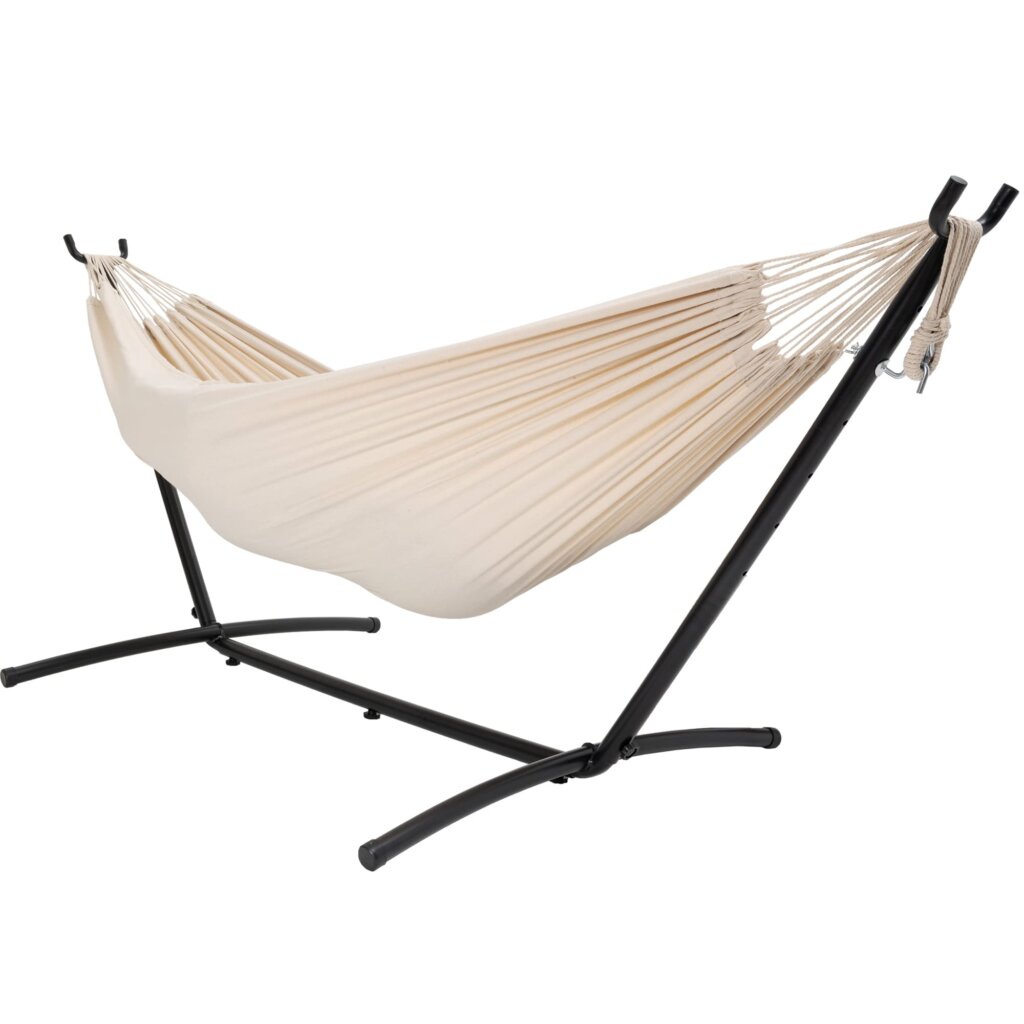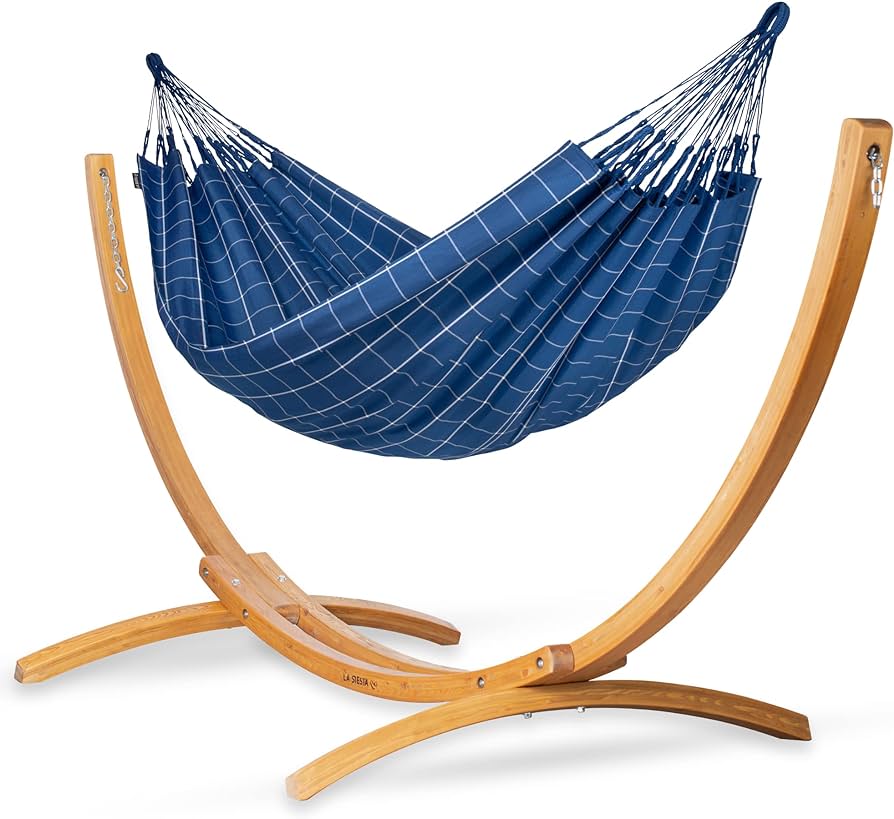- 8 Airplane Footrest Hammock!Travel comfortably - October 9, 2023
- top 7 Pool Float Water Hammock for a Relaxing Summer - October 9, 2023
- top 5 Space SaverSingle Hammock Stand Maximize Comfort and Space - October 9, 2023
Weather-resistant hammocks are durable and can withstand various weather conditions. They are designed to be left outdoors for extended periods of time without getting damaged.
The Role Of Weather-Resistance In Hammock Durability
Explanation of the importance of weather-resistance in hammocks
When it comes to hammock durability, weather-resistance plays a crucial role. Hammocks are designed to provide a relaxing outdoor experience, but they are constantly exposed to various weather conditions. From intense heat to heavy rain and even snow, hammocks need to be able to withstand it all. This is where weather-resistant materials make a difference.
How weather-resistant materials enhance durability
Weather-resistant materials, such as polyester and nylon, are engineered to withstand the elements. These materials are specifically designed to resist moisture, UV damage, mold, and mildew. Let’s take a closer look at how weather-resistant materials enhance the durability of hammocks:
- Moisture resistance: Rain or moisture exposure can cause traditional hammocks made of cotton to become damp and eventually rot or develop mold and mildew. Weather-resistant hammocks are built to repel water, preventing moisture from seeping into the fabric and causing damage. This moisture resistance ensures that the hammock remains in excellent condition over time, even when exposed to rain or high humidity.
- UV protection: The sun’s UV rays can be extremely damaging to hammocks. Prolonged exposure to sunlight can cause the fabric to fade, weaken, and deteriorate. Weather-resistant hammocks are often treated with UV inhibitors, which help protect the fabric from harmful UV rays. This UV protection ensures that the hammock retains its vibrant colors and structural integrity for a longer period.
- Mold and mildew resistance: Moisture in the air and damp environments can lead to the growth of mold and mildew. Weather-resistant hammocks are made with materials that are resistant to these unwanted fungi. The fabric is designed to resist moisture absorption, preventing mold and mildew growth. This resistance helps maintain the hammock’s cleanliness and durability, even in humid or damp conditions.
In conclusion, weather-resistance plays a significant role in the durability of hammocks. By using weather-resistant materials, hammocks can withstand different weather conditions, including rain, sun, and humidity. This enhances the lifespan of the hammock, saving you money in the long run. Investing in a weather-resistant hammock ensures that you can enjoy the comfort and relaxation it provides for years to come.
Understanding The Construction Of Weather-Resistant Hammocks
Understanding the Construction of Weather-Resistant Hammocks
Weather-resistant hammocks are designed to withstand various outdoor conditions, including rain, sun exposure, and moisture. The construction of these hammocks plays a crucial role in their durability and ability to withstand the elements. In this section, we will explore the key features of weather-resistant hammocks, how different materials contribute to their durability, and the impact of specialized design on their weather-resistance.
Key features of weather-resistant hammocks
Weather-resistant hammocks are engineered with specific features that enhance their durability and make them suitable for outdoor use. These features include:
– Water-resistant materials: Weather-resistant hammocks are typically made from materials that repel water, such as polyester, nylon, or synthetic blends. These fabrics are treated with special coatings or finishes that create a barrier against moisture, preventing the hammock from retaining water and developing mold or mildew.
– UV protection: Another essential feature of weather-resistant hammocks is their ability to withstand sun exposure. These hammocks are often treated with UV-resistant coatings that protect the fabric from fading or deteriorating when exposed to sunlight for prolonged periods.
– Reinforced stitching: To ensure long-lasting durability, weather-resistant hammocks feature reinforced stitching in key stress areas. This strengthens the hammock’s overall structure and prevents it from tearing or unraveling under heavy use.
– Rust-resistant hardware: The hardware used in weather-resistant hammocks, such as carabiners or chains, is often made from rust-resistant materials like stainless steel or aluminum. This ensures that the hammock remains sturdy and resilient, even when exposed to rain or moisture.
How different materials contribute to durability
The choice of material greatly impacts the durability and weather-resistance of hammocks. Here are some commonly used materials and their contributions to the overall durability:
1. Polyester: Polyester is highly durable and resistant to UV rays, moisture, and mildew. It is easy to clean and maintain, making it a popular choice for weather-resistant hammocks.
2. Nylon: Nylon is known for its strength and durability. It is resistant to wear and tear and has excellent water-repellent properties. Nylon hammocks are lightweight and quick-drying, making them ideal for outdoor use.
3. Synthetic blends: Some weather-resistant hammocks are made from a combination of synthetic fibers, such as polyester and cotton blends. These blends offer a balance of comfort and durability, with added moisture and UV resistance.
The impact of specialized design on weather-resistance
Apart from the choice of materials, specialized design features further enhance the weather-resistance of hammocks. These design elements include:
– Breathable mesh panels: Weather-resistant hammocks often incorporate breathable mesh panels that allow for air circulation, preventing condensation and reducing the risk of mold or mildew.
– Integrated rainfly or canopy: Some hammocks come with an integrated rainfly or canopy that provides additional protection against rain and sun. These features help to keep the hammock and the user dry and comfortable during inclement weather.
– Reinforced suspension system: A strong and reliable suspension system is crucial for the weather-resistance of hammocks. Hammocks with reinforced webbing or straps and sturdy carabiners ensure a secure and stable setup, even in challenging weather conditions.
In conclusion, weather-resistant hammocks are durable and designed to withstand various outdoor conditions. Key features such as water-resistant materials, UV protection, reinforced stitching, and rust-resistant hardware contribute to their durability. Different materials like polyester and nylon offer excellent weather-resistance, while specialized design elements like breathable mesh panels and integrated rainflys enhance their ability to withstand the elements. When choosing a weather-resistant hammock, considering these features and materials ensures a long-lasting and reliable outdoor lounging experience.
Testing And Certification For Weather-Resistant Hammocks
Testing and Certification for Weather-Resistant Hammocks
Overview of industry standards and testing criteria for durability
When it comes to purchasing a weather-resistant hammock, durability is a crucial factor to consider. After all, you want your hammock to withstand the elements and provide long-lasting comfort. Thankfully, there are industry standards and testing criteria in place to ensure that weather-resistant hammocks meet certain durability requirements.
Industry standards for hammock durability typically involve rigorous testing procedures that simulate various weather conditions and use scenarios. These tests aim to assess the hammock’s ability to withstand factors like extreme temperatures, UV radiation, moisture, and wind. The hammock’s structure, fabric, stitching, and other components are evaluated to determine their strength, resistance to ripping, fade resistance, and overall performance during adverse weather conditions.
Importance of certifications and what they signify
Now, you might be wondering how to identify weather-resistant hammocks that have undergone proper testing and meet industry standards. This is where certifications come into play. Certifications are essential as they provide assurance that a particular hammock has been rigorously tested and meets the required durability criteria.
These certifications signify that the hammock has undergone independent testing and evaluation by reputable organizations. They indicate that the hammock has met or exceeded certain standards for durability, weather resistance, and overall quality. By choosing a hammock with certifications, you can have peace of mind knowing that you are investing in a product that has been vetted and approved by experts in the field.
Popular certification organizations for weather-resistant hammocks
When shopping for a weather-resistant hammock, it’s helpful to be aware of the popular certification organizations that focus on verifying the durability and performance of these products. Here are a few renowned certification organizations:
| Certification Organization | Description |
| ACME Hammock Certification | The ACME Hammock Certification is a highly recognized certification that ensures hammocks meet stringent durability criteria. Hammocks with this certification have been tested for resistance against weather conditions such as rain, heat, and UV radiation. |
| WeatherGuard Certified | WeatherGuard Certified hammocks have undergone comprehensive testing to demonstrate their ability to withstand adverse weather conditions. These hammocks are verified for their resistance to moisture, sun exposure, and other environmental factors. |
| Outdoor Quality Assurance | Outdoor Quality Assurance is a well-known organization that certifies weather-resistant hammocks. Hammocks with this certification have been rigorously tested for durability, providing assurance to consumers that they are investing in a high-quality and long-lasting product. |
By prioritizing certifications from these organizations, you can easily identify weather-resistant hammocks that have undergone thorough testing, ensuring their durability and performance even in challenging weather conditions.
In conclusion, testing and certification play a vital role in ensuring the durability of weather-resistant hammocks. By considering industry standards, certifications, and reputable organizations, you can make an informed decision and choose a hammock that will withstand the test of time and weather conditions, ensuring you can relax comfortably outdoors for years to come.

Credit: www.amazon.com
Frequently Asked Questions Of Are Weather-Resistant Hammocks Durable
Can Hammocks Be Left Out In The Rain?
While hammocks can withstand a sprinkle of rain, it’s generally recommended to bring them inside when expecting heavy rainfall. Cotton hammocks should not be left outside for extended periods as they are not resistant to moisture. Nylon hammocks are more durable and weather-resistant for outdoor use.
Is It Okay To Leave A Hammock Outside?
Cotton hammocks can be left outside for short periods but it is not recommended for extended periods. They should be protected from moisture. Nylon hammocks are a more durable option for outdoor use as they are resistant to wear and tear, mildew, and UV damage.
Polyester hammocks are also weather-resistant and resistant to mold, mildew, and UV rays.
Can You Leave A Hammock Outside In The Winter?
Yes, it is generally not recommended to leave a hammock outside in the winter. While weather-resistant hammocks are durable, extended exposure to moisture and cold temperatures can still cause damage. It is best to bring your hammock indoors or store it in a dry location during the winter months.
What Is The Strongest Material For A Hammock?
Nylon is the strongest material for a hammock due to its durability, resistance to wear and tear, and ability to withstand mildew. It is also lightweight and easy to transport.
Are Weather-Resistant Hammocks Durable In Rainy Weather?
Yes, weather-resistant hammocks are designed to withstand rain and moisture. They are made from materials that resist water damage.
Can Hammocks Be Left Outside In The Winter?
It is generally not recommended to leave hammocks outside in the winter, especially if they are made of cotton. Extreme cold and moisture can damage the fabric.
Conclusion
Weather-resistant hammocks are durable and designed to withstand various weather conditions. While it’s recommended to bring them indoors during heavy rain or extended periods of inclement weather, a sprinkle here and there won’t harm the hammock. Nylon and polyester materials are highly durable, tearproof, and resistant to mold, mildew, and UV damage.
These hammocks offer care-free relaxation and can be left outdoors for long periods, making them a great option for outdoor use. So, if you’re looking for a durable and weather-resistant hammock, consider investing in one made of nylon or polyester.






Pingback: Should I Leave My Hammock Outside? (Storage Guide)